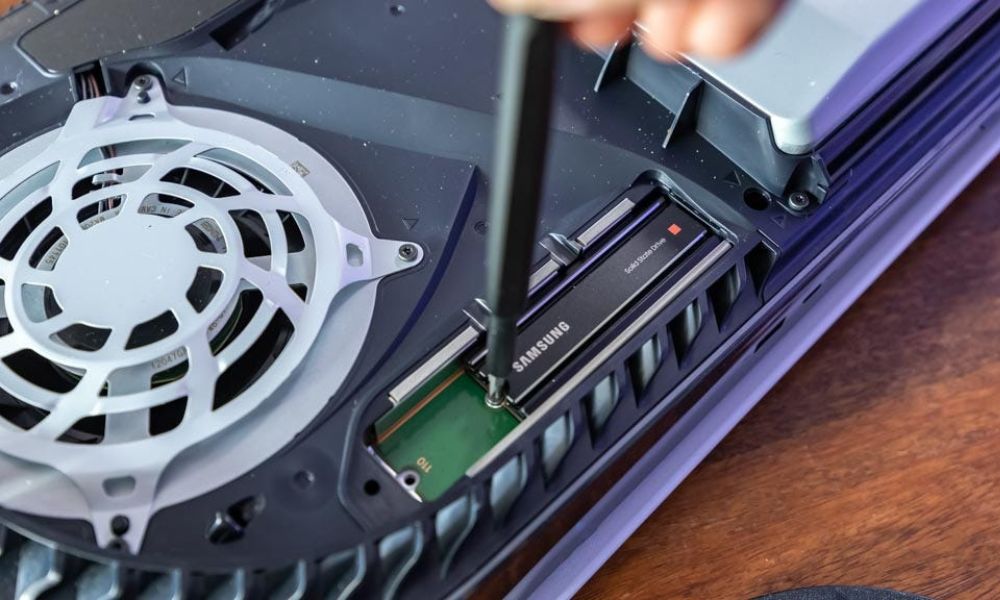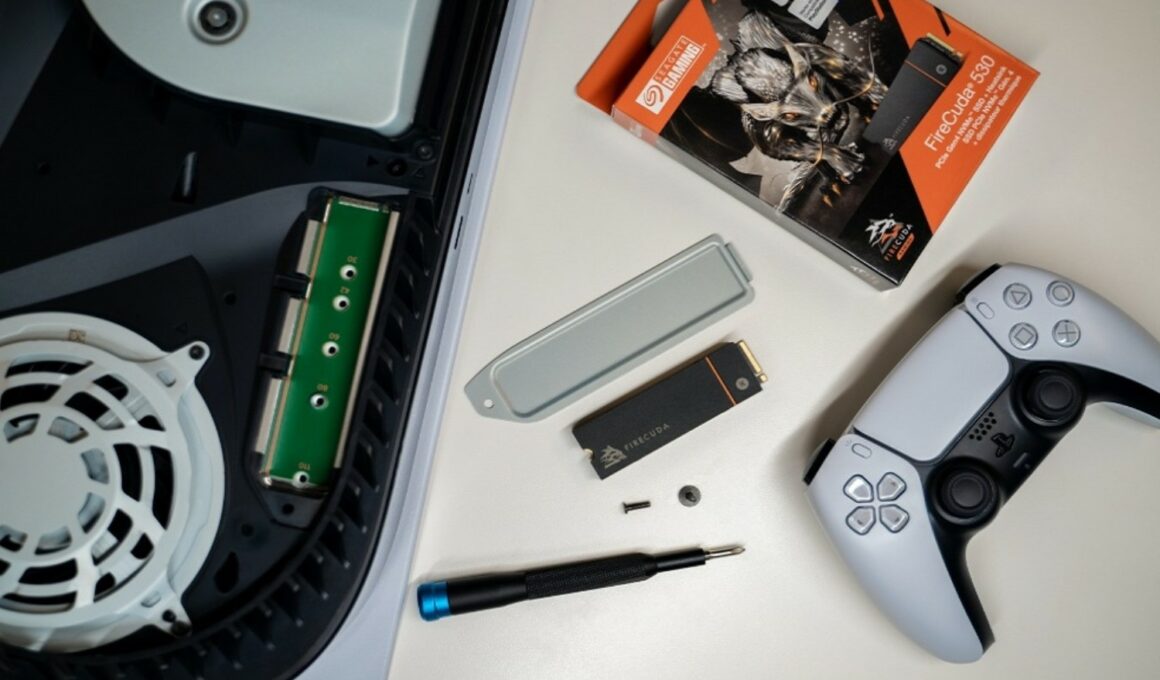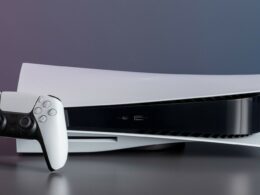On This Page Show
Solid State Drives (SSDs) have revolutionized gaming, offering faster load times and smoother gameplay experiences. However, with the release of the PlayStation 5 (PS5), questions arise about the need for additional cooling, particularly in regards to heatsinks.
As a hardware writer for GamerGoats, let’s unravel the mystery surrounding the necessity of a heatsink for the PS5 SSD, keeping it straightforward and informative.
The PS5’s SSD is a game-changer, but its performance can be affected by heat buildup during intense gaming sessions. So, do you need a heatsink for your PS5 SSD? Let’s explore.
Do You Need a Heatsink For PS5 SSD?
Yes, adding a heatsink to your PS5 SSD can help dissipate heat and maintain optimal performance during intense gaming sessions.

Overview Of The PS5’s Custom-Designed SSD
The PlayStation 5 (PS5) boasts a custom-designed Solid State Drive (SSD) that revolutionizes gaming performance.
Unlike traditional hard drives, the PS5 SSD utilizes cutting-edge technology to drastically reduce load times, allowing for seamless transitions between game environments and faster rendering of high-resolution graphics.
This enhanced storage solution not only improves gameplay experiences but also opens up new possibilities for game developers to create more immersive worlds and gameplay mechanics.
With its advanced capabilities, the PS5 SSD can generate significant heat during intensive gaming sessions. As players engage in graphically demanding games or multitask with various applications running simultaneously, the SSD may experience increased thermal stress.
This heat buildup can potentially impact the overall performance and longevity of the SSD if not adequately managed. Therefore, it becomes crucial to address thermal management solutions to ensure optimal performance and reliability of the PS5 SSD over time.
Installing a Heatsink on PS5 SSD: A Step-by-Step Guide
Before installing a heatsink on the PS5 SSD, ensure to power off the console and disconnect all cables. Additionally, verify compatibility with your SSD model and ensure you have the necessary tools for installation.
Step-By-Step Instructions
- Carefully remove the PS5 SSD cover by unscrewing the designated screws.
- Gently lift the SSD from its slot and place it on a clean, flat surface.
- Clean the surface of the SSD with a soft cloth to remove any dust or debris.
- Apply the thermal paste evenly on the SSD surface where the heatsink will be placed.
- Carefully attach the heatsink to the SSD, ensuring it aligns properly with the screw holes.
- Secure the heatsink in place by tightening the screws, but be cautious not to over-tighten.
- Once the heatsink is securely attached, reinsert the SSD into the PS5 console and replace the cover.

Tips For Proper Installation and Compatibility
Here are the following tips you should have in mind for proper installation;
- Double-check compatibility with your PS5 SSD model and ensure the heatsink is designed to fit properly.
- Follow the manufacturer’s instructions carefully to avoid damaging the SSD or console.
- Be gentle when handling the SSD and heatsink to prevent any accidental damage.
- After installation, test the PS5 console to ensure the SSD functions properly and monitor temperatures to ensure effective cooling.
Alternatives To Heatsinks for PS5 SSD Cooling
External cooling fans or cooling pads can help maintain optimal SSD temperatures during gaming sessions. These solutions are easy to install and can be a cost-effective alternative to aftermarket heatsinks.
However, their effectiveness may vary depending on the ambient temperature and airflow in your gaming setup.
- Ensure proper ventilation for the PS5 console by placing it in a well-ventilated area.
- Use external cooling fans or cooling pads to help dissipate heat from the console and SSD.
- Consider upgrading the console’s internal cooling system for improved airflow and heat dissipation.
Limitations and Drawbacks
- External cooling solutions may add bulk to the console setup and could potentially detract from the aesthetics of the gaming environment.
- Depending on the quality and design of the external cooling device, there may be noise issues associated with fan operation.
- While external cooling can help mitigate heat buildup, it may not address underlying issues with the console’s internal cooling system or thermal management.
- Additionally, external cooling solutions may incur additional costs and require periodic maintenance to ensure optimal performance.










